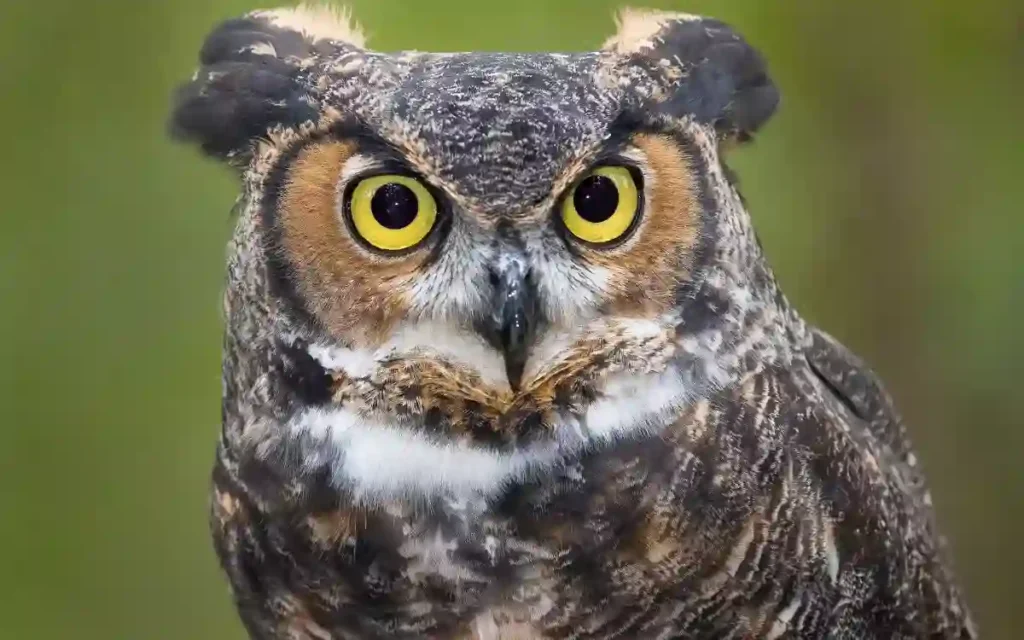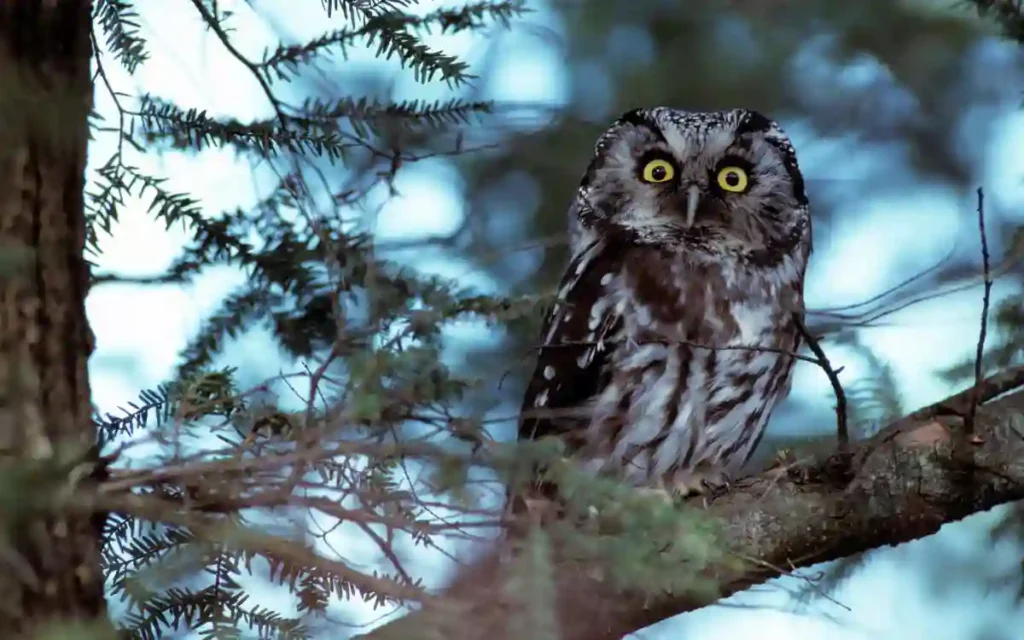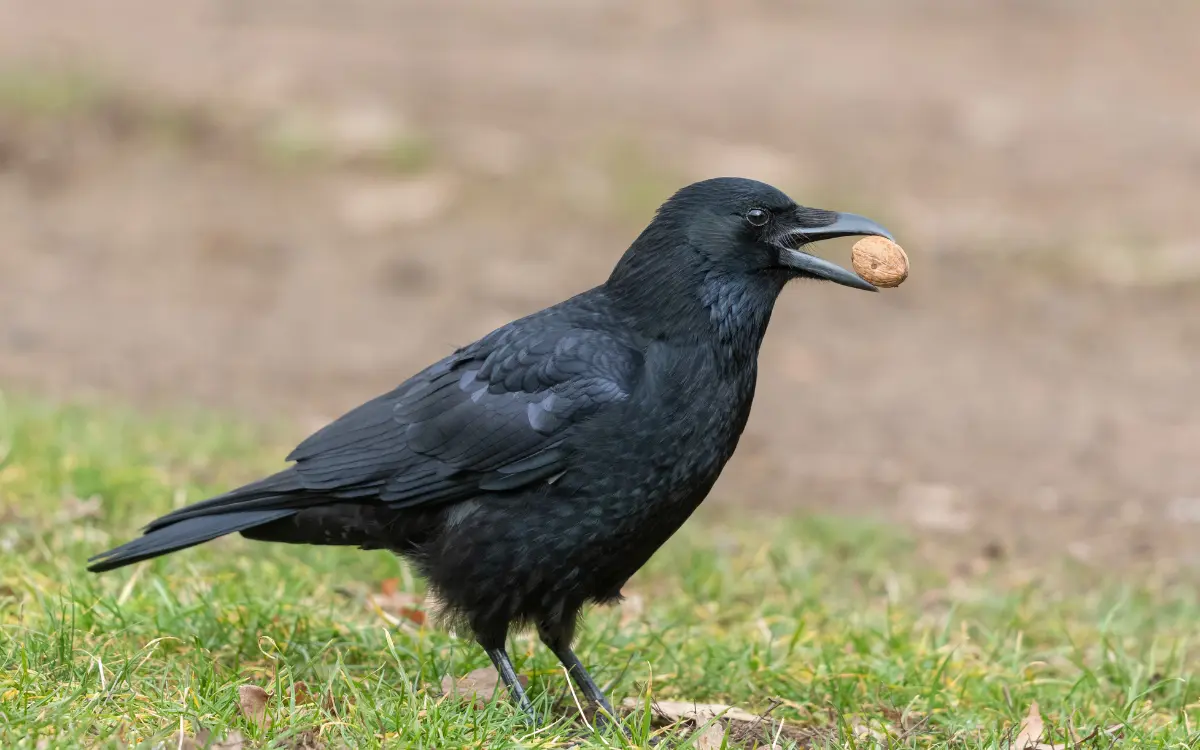Great Horned Owl vs Barred Owl: Identification, Habits, and Key Differences
Owls are some of the most fascinating birds to encounter, but two species often cause confusion: the Great Horned Owl and the Barred Owl. Both are large, powerful, and widespread across North America, yet they differ in appearance, behavior, and even the sounds they make at night.
This guide breaks down the distinctions between these two raptors so birdwatchers, backyard enthusiasts, and nature lovers can confidently tell them apart.
Great Horned Owl

- Stocky body with broad wings
- Distinctive ear tufts (horn-like feathers)
- Yellow eyes, white throat patch
- Plumage: mottled gray-brown with darker barring
Barred Owl

- Rounded head with no ear tufts
- Large, dark brown eyes (unlike the yellow of Great Horned)
- Horizontal and vertical barring across chest and belly
- Generally lighter, with a softer overall pattern
Comparison Table
| Feature | Great Horned Owl | Barred Owl |
| Ear Tufts | Prominent | None |
| Eye Color | Yellow | Dark Brown |
| Head Shape | Angular | Rounded |
| Chest Pattern | Mottled, less distinct | Heavy barring |
| Size Range | 18–25 in | 16–23 in |
Habitat and Range
Great Horned Owl
- Found across most of North and South America
- Prefers forests, deserts, wetlands, and even city parks
- Highly adaptable, one of the widest-ranging owls
Barred Owl
- Native to eastern North America, spreading westward
- Strongly tied to mature forests and wooded swamps
- Expanding range due to habitat changes
Behavior and Diet
Great Horned Owl
- Known as the “tiger of the skies” for its hunting power
- Preys on mammals (rabbits, skunks, squirrels), birds, reptiles
- Aggressive hunters, even taking other raptors
Barred Owl
- Hunts mainly small mammals, amphibians, and fish
- Less aggressive, but still skilled hunters
- More sedentary, often staying in one home territory for years
Calls and Vocalizations
Great Horned Owl
- Famous deep “hoo-hoo-hoo” pattern
- Resonant and far-carrying, often used to mark territory
Barred Owl
- Distinctive “Who cooks for you? Who cooks for you-all?” hoot
- Can sound eerie, especially when pairs call together
Interactions Between the Two
- Competition: Great Horned Owls often displace or prey on Barred Owls in overlapping habitats.
- Territorial Conflicts: Barred Owls tend to avoid areas where Great Horned Owls are active.
Which Owl Are You More Likely to See?
- In suburban areas and diverse habitats → Great Horned Owl
- In dense forests and swamps → Barred Owl
- Regional overlap is common, so listening for calls is often the best clue.
FAQs
Which owl is bigger, the Great Horned or the Barred Owl?
Great Horned Owls are typically larger and heavier, with a stronger build and wingspan compared to Barred Owls.
Can Great Horned and Barred Owls live in the same area?
Yes, but competition is high. Great Horned Owls often dominate and may even prey on Barred Owls.
Do both owls hunt during the day?
Both are primarily nocturnal, but Barred Owls are sometimes seen hunting in the late afternoon.
How can I tell them apart by sound?
Listen for the Great Horned’s deep “hoo-hoo” versus the Barred Owl’s “who cooks for you-all” call.
Which owl is more common in backyards?
Barred Owls are common in wooded neighborhoods, while Great Horned Owls are seen more widely in varied habitats.






